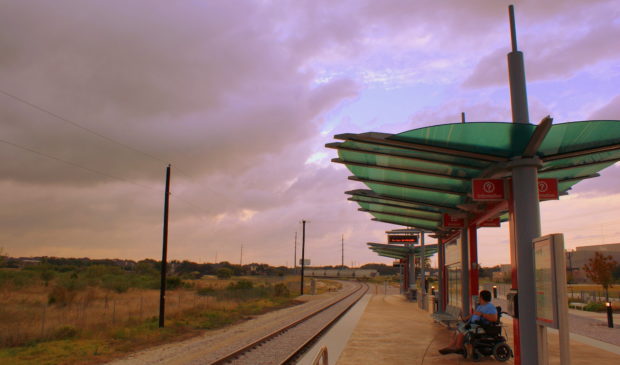Project Connect: Council to consider equity metrics
Wednesday, September 2, 2020 by
Ryan Thornton Included in the $7.1 billion Project Connect proposal for Nov. 3 is $300 million for affordable housing and neighborhood-level displacement prevention strategies along transit corridors. On Thursday, City Council will vote on a resolution further clarifying that impacted neighborhoods are to help establish the metrics to measure the success of those displacement prevention efforts.
“We’re not dictating what (the metrics) are,” Council Member Ann Kitchen told the Austin Monitor on Tuesday. “Some examples might be data around the ability to keep people in their homes, for example. It could be some kind of benchmark about how many households might need assistance and how many were we able to provide some kind of housing supportive strategy that helped them stay in their home. It could be a strategy about how much was a family able to save in their transportation costs in being along a transit line. It’s a whole range of things and really it’s going to depend on that conversation at the neighborhood level about what the needs are in a particular area.”
Drawing on the advocacy of groups like Austin Justice Coalition and People United for Mobility Action, Kitchen first proposed the need for a displacement prevention effort alongside Project Connect with a resolution in April. That effort has culminated in the city’s largest-ever proposal for investments in affordable housing and displacement prevention.
To make the best use of that investment, Mayor Steve Adler, Mayor Pro Tem Delia Garza and Council members Kitchen, Natasha Harper-Madison, Jimmy Flannigan and Leslie Pool are bringing a resolution Thursday to clarify that impacted residents shall be consulted in shaping the performance metrics for that historic investment. If approved, it will also clarify that residents may help set equity triggers that, if reached, would automatically place Project Connect on an upcoming Council meeting agenda.
Kyle Shelton, director of strategic partnerships at Rice University’s Kinder Institute for Urban Research, studies transportation and planning policy in Houston. He told the Monitor that large-scale public projects like Project Connect can directly contribute to displacement and significant neighborhood change, but that proactively engaging residents ahead of time raises the potential for infrastructure to increase equity and opportunity for communities vulnerable to displacement.
According to Shelton’s research, the key is to give residents a seat at the table from the very start to track how the project contributes to existing economic and real-estate pressures over many years. These conversations offer a window into displacement pressures that are otherwise difficult to obtain with traditional data sources.
Additionally, Shelton said it’s “critical” to hold conversations to learn what solutions residents need to manage and adapt to those pressures. “It’s more than just getting their opinion about how things are changing, and more to inform a really concrete equitable policy.”
Shelton mentioned land banking and public housing investments near future transit stops as robust options to ensure long-term stability for residents. In the case of redevelopment, he said, right-to-return policies can also provide direct stability to existing residents as long as plans are made clear from the start. In addition to these options, the city’s contract with voters also lists rehabilitation of existing affordable housing, rental assistance and financial aid for homeowners as potential uses of the $300 million.
In July, just before Council adopted the $7.1 billion investment package, Harper-Madison expressed support on the City Council Message Board for starting community conversations to further develop these strategies “sooner rather than later.”
“As we’re talking about better ways to help people move around our city, we also absolutely have to be talking about better ways to help them stay right where they are. Furthermore, we can’t just throw money at a problem which is why I was pleased to read the mayor’s bullet point about ‘neighborhood level anti-displacement strategies co-created with the community.’”
If done correctly, Shelton said an investment like Project Connect and its anti-displacement components could ultimately benefit existing residents along the future transit corridors while also creating opportunities for new residents of various income levels to enjoy increased access to other parts of the city.
“Obviously you want to maintain historic connections and long-term residents for reasons in and of themselves, but there is also a huge benefit for permitting folks with low incomes to stay and relocate into those areas. So I think once you’re creating an opportunity like a better transit system, you want to find ways to get folks who don’t currently have access to opportunities into those spaces as well.”
Photo made available through a Creative Commons license.
The Austin Monitor’s work is made possible by donations from the community. Though our reporting covers donors from time to time, we are careful to keep business and editorial efforts separate while maintaining transparency. A complete list of donors is available here, and our code of ethics is explained here.
You're a community leader
And we’re honored you look to us for serious, in-depth news. You know a strong community needs local and dedicated watchdog reporting. We’re here for you and that won’t change. Now will you take the powerful next step and support our nonprofit news organization?






